18 Plants That Should Never Be Planted Together
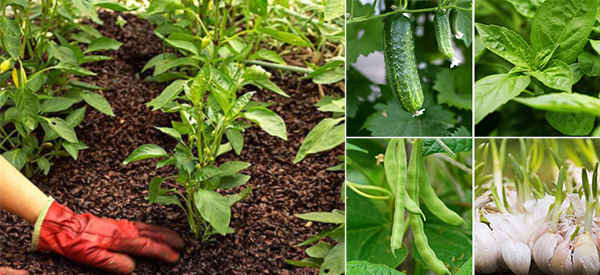
by DIANE
There are many reasons why certain plants should not be planted together. Sometimes it is a matter of height. For example, a tall tomato plant will steal the sun from smaller plants nearby. Or it could be a matter of moisture. Mint, a water seeking plant, and a desert cactus will not do well next to each other since they have conflicting needs.
Another problem is plants that are susceptible to the same diseases. For example, I live in a very humid environment and have problems with a fungus on my squash. If I plant melons too close to the squash, they will also be infected. By keeping them separate, the melons survive long enough to produce a crop.
Additionally, there are plants that chemically damage other plants or prevent their growth. These plants are called allelopathic plants. They leave behind chemicals that can harm or kill certain other plants. Many of the plants mentioned in this article are allelopathic. You may be planting these plants together and then wondering why your plants aren’t doing well, especially if you have a small garden where the plants are all snuggled in together.
Allelopathic plants make planning your garden more difficult. Most home gardeners have not considered allelopathic chemicals, and simply plant wherever they have space. I suspect that allelopathic chemicals are probably the source of many of my crop failures over the years. Now that I know about these plants, my crops are more reliable.
⇒ Learn An Insanely Effective Way To Build A 5 Year Food Stockpile
Here are some plants that do not grow well when planted together:
Potatoes
Potatoes have problems with many plants. I tend to stick them off in a far corner of the garden because they don’t grow well with many of the plants in my garden.
Potatoes and tomatoes are members of the same family, but they do not grow well when planted together. Potatoes slow the growth of the tomato plant and themselves become more susceptible to Phytophthora, known as potato blight, when the plants are together. When rotating plants, do not plant potatoes or tomatoes where the other grew the previous year.
Potatoes also don’t play well with cucumbers, melons, tomatoes, squash, turnips, or sunflowers.
Beans and Peas
Both peas and beans have negative effects on some plants including all kinds of peppers, sweet and hot. Beets are also affected by pole beans of all kinds.
Broccoli and Cauliflower
Neither broccoli or cauliflower will grow well near peppers, strawberries, tomatoes, and squash of all types, including zucchini, yellow squash, and winter squash like pumpkins.
Cabbage and Cauliflower
When cabbage and cauliflower are planted together, they are more likely to be affected by Plasmodiophora brassicae, also known as club root. The fungus causes the roots to swell and become unable to take up water and the plant quickly dies. Radish and tomato also do not do well near cabbage and cauliflower.
Asparagus
Asparagus does not like other plants growing too close, so give the bed a little space. It is especially vulnerable to poor growth when planted next to onions, garlic, and potatoes.
Brussel Sprouts
Another cruciferous vegetable, brussels sprouts don’t grow well next to strawberries or tomatoes.
Kohlrabi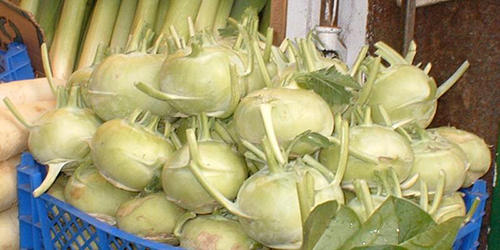
Kohlrabi is a cruciferous vegetable in the cabbage family and like other members of the family it does not like to be planted near pole beans, tomatoes, or strawberries.
Carrots
Carrots don’t grow well when planted too close to dill. I learned this one the hard way. I had conditioned the soil perfectly for those carrots, but they ended up small and malformed. The dill had a very noticeable effect on the crop. Now, I know to keep them separate. Carrots don’t like to share space with parsnips, either.
Nothing is more empowering than growing a garden and harvesting food in your yard. For more helpful information, check out this guide on how to make a year-round self-sustaining garden.
Celery
Celery is a little difficult to grow under normal circumstances, but for best results, it should never be planted near potatoes or parsnips.
Corn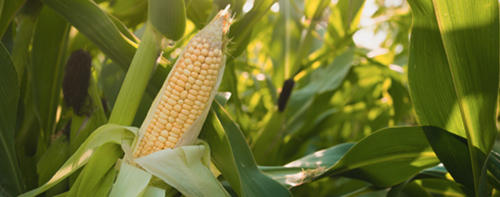
Corn and tomatoes should be separated due to their susceptibility to a common fungal infection. If your tomatoes become infected, they will infect the corn if they have been planted too close together. Both plants are also susceptible to cotton bollworm, also known as corn earworm and tomato fruit worm, another good reason to keep them apart.
Cucumbers
Cucumbers are one of the first vegetables that many new gardeners plant and they usually give good results. However, they do not like to be planted near potatoes, tomatoes, cauliflower, or any of the strong aromatic herbs like cilantro, basil, rosemary, thyme, or lavender.
Onions and The Allium Family
Onions, garlic, leeks, and shallots have a discouraging effect on beans and peas. When planted nearby, plants in the Allium family, like onions, stunt the growth of beans and peas. But, beans and peas have their own effects on other plants.
Beets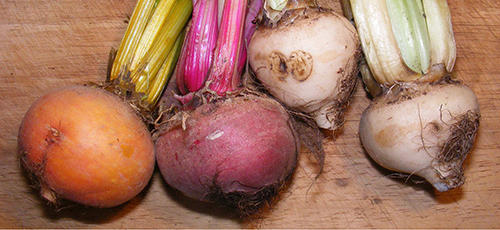
Beets do not grow well near mustard plants or any member of the bean or pea family.
Sunflowers
Sunflowers emit a chemical from their roots that prevents nearby plants from growing and competing for nutrients. This chemical affects an area of at least 12 inches around the plants. The seed shells also contain toxic chemicals that will kill grass and other plants, so harvest the seed heads before the seeds begin to drop. Don’t plant other plants within 12 inches of sunflower plants. Also be aware that they grow very tall and can shade out sun loving plants.
Marigolds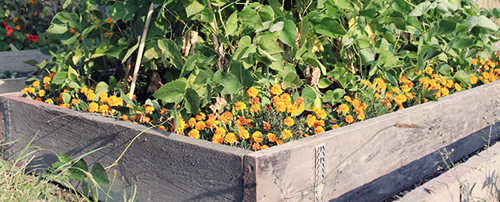
Marigolds are a popular addition to the vegetable garden because they keep away so many pests. However, they have a detrimental effect on beans and peas. Pole beans, bush beans, and peas should be planted far away from the marigolds.
Planning your garden is hard enough when you are limited in size and adding this information will make it even more difficult. Fortunately, you don’t need a lot of land to become completely self-sufficient. In fact, 1/4 acre is enough, if you follow this comprehensive guide. However, it is work considering the effects that plants have on each other when you draw up your garden plan. Otherwise, you may end up with a disappointing yield and never understand why.
Lettuce
Lettuce is easy to grow when planted away from beans and beets. Surprisingly, they also do not like to be near parsley.
Melons
Melons are also susceptible to funguses caught from squashes and also should not be planted near potatoes or cucumbers.
Tomatoes
Cucumbers, cilantro, and tomatoes are delicious together, but they do not like to grow too close together.
Anyone can join.
Anyone can contribute.
Anyone can become informed about their world.
"United We Stand" Click Here To Create Your Personal Citizen Journalist Account Today, Be Sure To Invite Your Friends.
Humic & Fulvic Liquid Trace Mineral Complex
HerbAnomic’s Humic and Fulvic Liquid Trace Mineral Complex is a revolutionary New Humic and Fulvic Acid Complex designed to support your body at the cellular level. Our product has been thoroughly tested by an ISO/IEC Certified Lab for toxins and Heavy metals as well as for trace mineral content. We KNOW we have NO lead, arsenic, mercury, aluminum etc. in our Formula. This Humic & Fulvic Liquid Trace Mineral complex has high trace levels of naturally occurring Humic and Fulvic Acids as well as high trace levels of Zinc, Iron, Magnesium, Molybdenum, Potassium and more. There is a wide range of up to 70 trace minerals which occur naturally in our Complex at varying levels. We Choose to list the 8 substances which occur in higher trace levels on our supplement panel. We don’t claim a high number of minerals as other Humic and Fulvic Supplements do and leave you to guess which elements you’ll be getting. Order Your Humic Fulvic for Your Family by Clicking on this Link , or the Banner Below.
Our Formula is an exceptional value compared to other Humic Fulvic Minerals because...
It’s OXYGENATED
It Always Tests at 9.5+ pH
Preservative and Chemical Free
Allergen Free
Comes From a Pure, Unpolluted, Organic Source
Is an Excellent Source for Trace Minerals
Is From Whole, Prehisoric Plant Based Origin Material With Ionic Minerals and Constituents
Highly Conductive/Full of Extra Electrons
Is a Full Spectrum Complex
Our Humic and Fulvic Liquid Trace Mineral Complex has Minerals, Amino Acids, Poly Electrolytes, Phytochemicals, Polyphenols, Bioflavonoids and Trace Vitamins included with the Humic and Fulvic Acid. Our Source material is high in these constituents, where other manufacturers use inferior materials.
Try Our Humic and Fulvic Liquid Trace Mineral Complex today. Order Yours Today by Following This Link.






